Matthew Murrie's Blog, page 4
January 12, 2023
What to Wonder to Make Thursdays Tremendous

Enjoy these "what ifs...?" and Thursday facts to make your Thursday even better than your ,Wednesday!
What if Thursdays were "Treasure Hunt Day" and there was a hidden treasure somewhere to be found during your day?
What if Thursdays were a day for only volunteering and community service?
What if Thursdays were "Fantasy Day" and you could bring any fantasy creature to life?
What if Thursdays were a day for only learning new skills?
What if Thursdays were "Foodie Day" and you could try any food from around the world?
What if Thursdays were a day for only discussing new ideas and brainstorming?
What if Thursdays were a day for finding inspiration from nature or other fields?
What if Thursdays were a day for only organizing and decluttering?
 What if you make your Thursday as historic as these Thursdays from history:
What if you make your Thursday as historic as these Thursdays from history:The First Successful Transatlantic Telegraph Cable Was Laid (August 5, 1858):
On a Thursday, the first telegraph cable was laid across the Atlantic Ocean, connecting Europe and North America and revolutionizing global communication.
,The Boston Tea Party (December 16, 1773):
This act of rebellion, in which American colonists protested against British taxation by throwing tea into Boston Harbor, was a significant event leading up to the American Revolution, it was carried out on a Thursday.
,The Signing of the Declaration of Independence (July 4, 1776):
On a Thursday, the Continental Congress adopted the Declaration of Independence, which marked the beginning of the American Revolution and the birth of the United States of America.
,The First Successful Flight of the Wright Brothers (December 17, 1903):
On a Thursday, Orville and Wilbur Wright successfully flew the first powered aircraft, the Wright Flyer, in Kitty Hawk, North Carolina, marking the beginning of the aviation age.
,The Opening of the First New York City Subway (October 27, 1904):
On a Thursday, the first subway line in New York City opened to the public, marking a significant step forward in urban transportation and infrastructure.
The Battle of Midway (June 4, 1942):
The Battle of Midway was a crucial naval battle during World War II that took place on a Thursday. It was a decisive victory for the United States over Japan and marked the turning point of the war in the Pacific.
,The Founding of the National Organization for Women (June 30, 1966):
On a Thursday, a group of women, led by Betty Friedan, founded the National Organization for Women, a leading feminist organization that played a major role in the American women's rights movement.
,The Fall of the Berlin Wall (November 9, 1989):
On a Thursday, the Berlin Wall, which had separated East and West Germany, was opened, marking the end of the Cold War and the reunification of Germany.
 Curious why more curiosity is great for whatever you are doing?
Curious why more curiosity is great for whatever you are doing? Curiosity is a bio-hack. ,As Dr. Huberman points out, the act of getting curious releases dopamine, serotonin, and norepinephrine simultaneously to produce a unique effect on the human body and brain. Learning how to harness and leverage this “hack” gives you a tremendous advantage in getting more done in whatever you are doing and finding greater satisfaction in what comes from it.
Curiosity can be so many things, it is easy to get lost in its power and potential. To simplify things here's a quick list of just some of what we know curiosity can do. Enjoy and stay curious!
Curious people are ,less anxious Curious people are ,less timid Curious people are ,not as defensive during initial counters with strangers Curious people have ,less aggressive actions to perceived triggers Curious people have ,improved conflict resolution skills Curious people have ,enhanced motivation to put themselves in another's shoes Curious people have ,less attachment to their own ideas Curious people have ,an increased interest in others' ideas Curious people are ,more likely to receive social support at work Curious people are ,more effective at building connections at work Curious people are ,more effective at building trust at work Curious people are ,more committed to their teams at work Curious people ,discover more innovative solutions that increase one's sense of meaningfulness at work
Be sure to follow along with ,What If Curiosity as I will dive deeper with more specific examples and actions for how you can take a Curiosity-Based Thinking approach to learn, get, and enjoy more out of all you do.
Let's chat to maximize the power of your curiosity!
The Only Sentence You’ll Need (Over and Over Again)
Welcome to the What If…? Power Sentence, a Curiosity-Based Thinking process
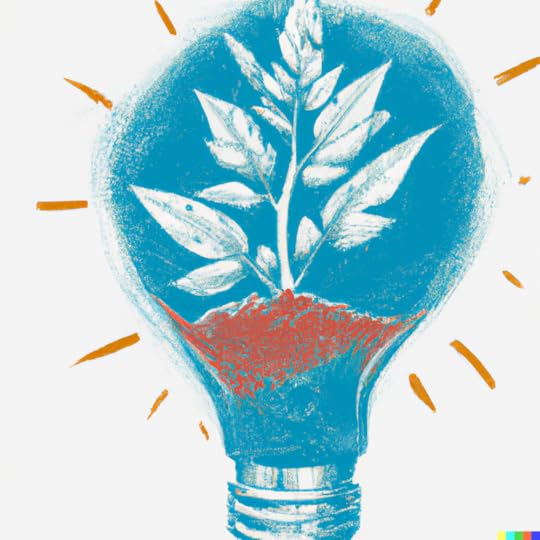
Whether you are creating a culture of curiosity within your organization or within yourself, the What If...? Power Sentence is a perfect place to start ,boosting productivity with curiosity. Just like other Curiosity-Based Thinking processes, the What If...? Power Sentence is easy to learn, quick to use, and fun to repeat.
Enjoy and stay curious!
How to write a What If…? Power Sentence:In a minute or less, write a one-sentence answer to each of the three questions and then plug them into the sentence. The What If…? Power Sentence can then be used for anything from students figuring out their topic and thesis to entrepreneurs communicating their value propositions, to executives developing their strategic plans.
While the writing of each sentence should take no more than a minute in order to discourage self-editing, feel free to prime each question with longer discussions around them before starting the minute to answer.
Step 1: What are you curious about?
Step 2: What are you passionate about?
Step 3: What is something you care enough about to find a solution?
Step 4: Fill in the following sentence with answers from Steps 1–3:
What if I combine my curiosity for____ with my passion for_____ to find a solution for_____?
Step 5: What are your next three steps to finding that solution?
Curious why more curiosity is great for whatever you are doing? Curiosity is a bio-hack. ,As Dr. Huberman points out, the act of getting curious releases dopamine, serotonin, and norepinephrine simultaneously to produce a unique effect on the human body and brain. Learning how to harness and leverage this “hack” gives you a tremendous advantage in getting more done in whatever you are doing and finding greater satisfaction in what comes from it.Curiosity can be so many things, it is easy to get lost in its power and potential. To simplify things here's a quick list of just some of what we know curiosity can do. Enjoy and stay curious! Curious people are ,less anxious Curious people are ,less timid Curious people are ,not as defensive during initial counters with strangers Curious people have ,less aggressive actions to perceived triggers Curious people have ,improved conflict resolution skills Curious people have ,enhanced motivation to put themselves in another's shoes Curious people have ,less attachment to their own ideas Curious people have ,an increased interest in others' ideas Curious people are ,more likely to receive social support at work Curious people are ,more effective at building connections at work Curious people are ,more effective at building trust at work Curious people are ,more committed to their teams at work Curious people ,discover more innovative solutions that increase one's sense of meaningfulness at workBe sure to follow along with ,What If Curiosity as I will dive deeper with more specific examples and actions for how you can take a Curiosity-Based Thinking approach to learn, get, and enjoy more out of all you do.,Let's chat to maximize the power of your curiosity!
January 11, 2023
What to Wonder to Make Wednesday Marvelous

Enjoy these "what ifs...?" and Wednesday-based jokes to make your Wednesday even better than your ,Tuesday !
What if Wednesday was a musical instrument?
What if Wednesday was a person, who would they be?
What if Wednesday was a country, what would its flag look like?
What if Wednesday was a planet, what would it be like?
What if Wednesday was a type of food, what would it taste like?
What if Wednesdays were 25 hours long?
What if Wednesday was the only day of the week that the sun shone?
What if Wednesday was a shape, what would it be?
 Wednesday Jokes
Wednesday JokesIf those what-if questions weren't enough to make your Wednesday more marvelous, here are some question jokes about Wednesday to tickle your funny bone and your curiosity!
- Why do Wednesdays always feel like they're stuck in the middle of the week? Because they are.
- Why did Wednesday cross the road? To get to the weekend on the other side.
- What do you call a sleepwalking nun on Wednesday? A roamin' Catholic.
- Why is Wednesday always so drained? Because it has to carry the weight of the week.
- Why don't scientists trust atoms on a Wednesday? They make up everything.
- I had a dream I was eating a giant marshmallow on a Wednesday, and when I woke up my pillow was gone.
- Why did Wednesday go to therapy? It had midweek blues.
- What did Wednesday say when it saw Thursday? "I am almost there!"
 Curious why more curiosity is great for whatever you are doing?
Curious why more curiosity is great for whatever you are doing? Curiosity is a bio-hack. ,As Dr. Huberman points out, the act of getting curious releases dopamine, serotonin, and norepinephrine simultaneously to produce a unique effect on the human body and brain. Learning how to harness and leverage this “hack” gives you a tremendous advantage in getting more done in whatever you are doing and finding greater satisfaction in what comes from it.
Curiosity can be so many things, it is easy to get lost in its power and potential. To simplify things here's a quick list of just some of what we know curiosity can do. Enjoy and stay curious!
Curious people are ,less anxious Curious people are ,less timid Curious people are ,not as defensive during initial counters with strangers Curious people have ,less aggressive actions to perceived triggers Curious people have ,improved conflict resolution skills Curious people have ,enhanced motivation to put themselves in another's shoes Curious people have ,less attachment to their own ideas Curious people have ,an increased interest in others' ideas Curious people are ,more likely to receive social support at work Curious people are ,more effective at building connections at work Curious people are ,more effective at building trust at work Curious people are ,more committed to their teams at work Curious people ,discover more innovative solutions that increase one's sense of meaningfulness at workBe sure to follow along with ,What If Curiosity as I will dive deeper with more specific examples and actions for how you can take a Curiosity-Based Thinking approach to learn, get, and enjoy more out of all you do.
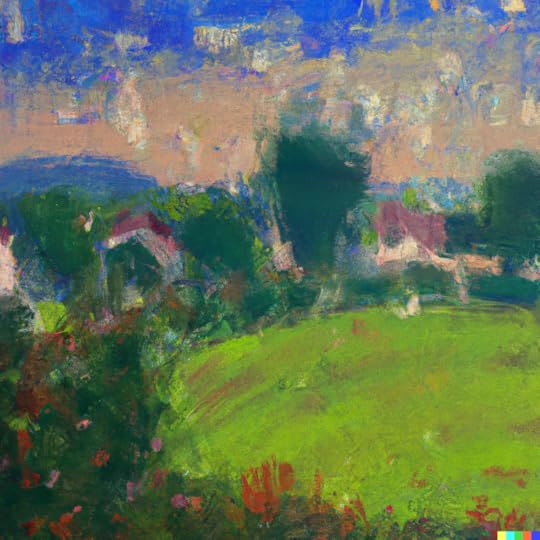
Let's chat to maximize the power of your curiosity!
January 10, 2023
What to Wonder to Make Tuesday Terrific!

Enjoy eight "what ifs...?" and eight Tuesday-based jokes to make your Tuesday even better than your ,Monday !
What if Tuesdays were actually called "Tickle-me-Tuesdays" and everyone got tickled when they woke up?
What if Tuesdays were "Tumbleweed Tuesdays," and you could ride on a tumbleweed all day?
What if every Tuesday was "Try-something-new Tuesday," where everyone had to try a new activity or food?
What if Tuesdays were "Transformation Tuesdays," where people could magically change into something else for the day?
What if Tuesdays were "Teleportation Tuesdays" and people could teleport anywhere they wanted to go?
What if Tuesdays were "Twinning Tuesdays" and everyone had a twin that they got to spend the day with?
What if Tuesdays were "Telekinesis Tuesdays," and you could move objects with your mind?
What if Tuesdays were "Turn-back-time Tuesdays," and you could relive any Tuesday from your past?
 Tuesday Jokes
Tuesday JokesIf those what-if questions weren't enough to make your Tuesday terrific, here are some question jokes about Tuesday to tickle your funny bone and your curiosity!
- What did Tuesday say when it met Wednesday? "I’ll see you next week!”
- Why was Tuesday afraid of Wednesday? Because Wednesday always follows too closely.
- Why did Tuesday cross the road? To get to the "Hump Day" on the other side
- Why don't Tuesdays like Thursdays? Because Thursday always steals its thunder
- How does Tuesday like its coffee? “With a little bit of Wednesday, hold the Monday”
- Why was Tuesday feeling down? Because Monday was a drag
- What does Tuesday wear to the gym? “Tuesday-day casuals”
- How does Tuesday like to start its day? With a good "Monday-ning"
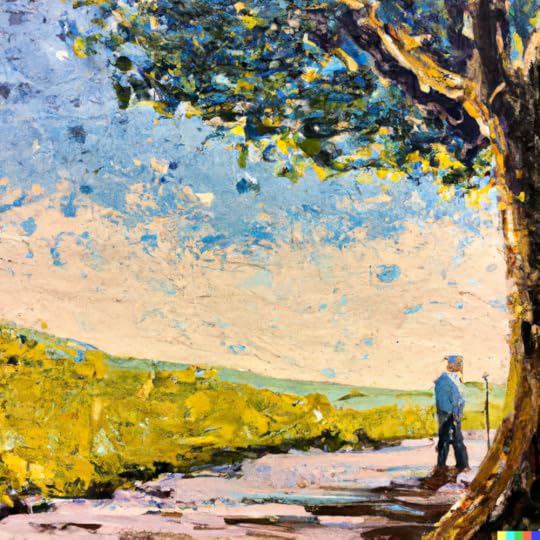 Curious why more curiosity is great for whatever you are doing?
Curious why more curiosity is great for whatever you are doing? Curiosity is a bio-hack. ,As Dr. Huberman points out, the act of getting curious releases dopamine, serotonin, and norepinephrine simultaneously to produce a unique effect on the human body and brain. Learning how to harness and leverage this “hack” gives you a tremendous advantage in getting more done in whatever you are doing and finding greater satisfaction in what comes from it.
Curiosity can be so many things, it is easy to get lost in its power and potential. To simplify things here's a quick list of just some of what we know curiosity can do. Enjoy and stay curious!
Curious people are ,less anxious Curious people are ,less timid Curious people are ,not as defensive during initial counters with strangers Curious people have ,less aggressive actions to perceived triggers Curious people have ,improved conflict resolution skills Curious people have ,enhanced motivation to put themselves in another's shoes Curious people have ,less attachment to their own ideas Curious people have ,an increased interest in others' ideas Curious people are ,more likely to receive social support at work Curious people are ,more effective at building connections at work Curious people are ,more effective at building trust at work Curious people are ,more committed to their teams at work Curious people ,discover more innovative solutions that increase one's sense of meaningfulness at work
Be sure to follow along with ,What If Curiosity as I will dive deeper with more specific examples and actions for how you can take a Curiosity-Based Thinking approach to learn, get, and enjoy more out of all you do.
Let's chat to maximize the power of your curiosity!
January 9, 2023
What to Wonder to Make Monday More Wonderful
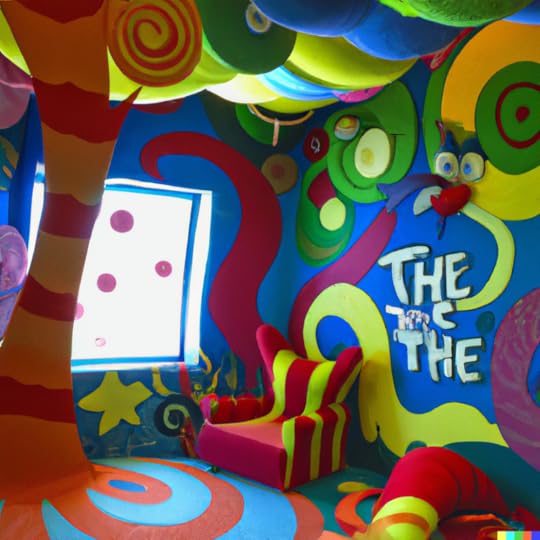
Enjoy this ,Curiosity Q & A, to, ,pique your curiosit,,y and ,enhance your Monday using Curiosity-Based Thinking!
What if Monday was a day when everyone's sense of humor was doubled?
What if Monday was a day when all forms of transportation were replaced with trampolines?
What if Monday was a day when all work and responsibilities were temporarily suspended?
What if Monday was a day when all forms of technology stopped working?
What if Monday was a day when everyone had to participate in a massive group hug?
What if Monday was a day when all food was replaced with cotton candy?
What if Monday was a day when everyone had to do their chores backward?
What if Monday was a day when everything was upside down?
What if Monday was a day when all forms of communication were replaced with sign language?
What if Monday was a day when everyone had to speak in a different accent?
What if Monday was a holiday?
What if all the clocks were turned backward on Monday, so the day went backward instead of forwards?
What if it always rained on Mondays, but the rest of the week was sunny and perfect?
What if Monday was a day when everyone got to wear their pajamas all day?
What if Monday was a day when all forms of transportation were replaced with bouncy castles?
What if every Monday, everyone's age was reduced by one year?
What if Monday was a day when everything was free?
What if Monday was a day when gravity was reversed?
What if Monday was a day when all food tasted like chocolate?
What if Monday was a day when all forms of communication were replaced with interpretive dance?
What if Monday was a day when all your favorite songs played on a never-ending loop?
What if Monday was a day when you could eat as much ice cream as you wanted without gaining weight?
What if Monday was a day when all forms of transportation were replaced with magic carpets?
What if Monday was a day when everything you touched turned to gold?
What if Monday was a day when you could fly?
What if Monday was a day when all your wishes were granted by a genie?
What if Monday was a day when you could have any superpower you wanted?
What if Monday was a day when you could visit any place in the world without having to pay for it?
What if Monday was a day when you could have any job you wanted, even if it didn't exist yet?
Monday JokesIf those what-if questions weren't enough to make your Monday more wonderful, here are some question jokes about Monday to tickle your funny bone and your curiosity!- Why was the math book sad on Monday? Because it had too many problems.
- Why was the computer cold on Monday? Because it left its Windows open on Sunday.
- Why was the calendar popular on Monday? Because it had a lot of dates.
- Why was the cat sitting on the computer on Monday? It wanted to keep an eye on the mouse.
- What did the frog say on Monday morning? "Time to hop to it!"
- What did the cat say on Monday morning? "Time to paw-ticipate in the work week."
- Why was Monday so dull? It needed a little spice – it was curried away.
- Why couldn't the bicycle stand up on Monday? It was two-tired.
- Why was the broom late for work on Monday? It overswept.
- Why did the tomato turn red on Monday? It saw the salad dressing.
Curious why more curiosity is great for whatever you are doing?
Curiosity is a bio-hack. ,As Dr. Huberman points out, the act of getting curious releases dopamine, serotonin, and norepinephrine simultaneously to produce a unique effect on the human body and brain. Learning how to harness and leverage this “hack” gives you a tremendous advantage in getting more done in whatever you are doing and finding greater satisfaction in what comes from it.
Curiosity can be so many things, it is easy to get lost in its power and potential. To simplify things here's a quick list of just some of what we know curiosity can do. Enjoy and stay curious!
Curious people are ,less anxious Curious people are ,less timid Curious people are ,not as defensive during initial counters with strangers Curious people have ,less aggressive actions to perceived triggers Curious people have ,improved conflict resolution skills Curious people have ,enhanced motivation to put themselves in another's shoes Curious people have ,less attachment to their own ideas Curious people have ,an increased interest in others' ideas Curious people are ,more likely to receive social support at work Curious people are ,more effective at building connections at work Curious people are ,more effective at building trust at work Curious people are ,more committed to their teams at work Curious people ,discover more innovative solutions that increase one's sense of meaningfulness at workBe sure to follow along with ,What If Curiosity as I will dive deeper with more specific examples and actions for how you can take a Curiosity-Based Thinking approach to learn, get, and enjoy more out of all you do.
Let's chat to maximize the power of your curiosity!
January 8, 2023
What to Wonder Before Reading Any Book

Enjoy this ,Curiosity Q & A of eight Curiosity Questions and Actions to enhance your understanding of any book using Curiosity-Based Thinking before and as you read it!
1. What if the characters in the book have superpowers? Create your own superhero character and write a short story about their adventures. Design a new superhero costume for one of the characters. Create a superhero training program or school schedule. Write a superhero-themed joke or riddle. Create a superhero-themed dance routine. Design a new superhero-themed party based on the book, using your creativity and party-planning skills.2. What if the plot of the book takes place in the future? Design a futuristic fashion line based on the book. Write a news report about an event in the future that is mentioned in the book. Create a futuristic recipe or menu based on the book. Write a futuristic fortune-telling game or quiz. Write a news report about an event in the future that is mentioned in the book. Design a new futuristic gadget or technology based on the book. Design a new futuristic city or habitat based on the book.3. What if the book is set in a different country? Design a new flag for the country in the book. Write a travel diary from the perspective of a new character (or yourself) visiting the country. Create a list of "tourist attractions" for the country based on the book. Research the culture, customs, and landmarks of that country and create a travel brochure or a presentation to share with others featuring information and images about the setting or culture. ,Find and write a letter to a pen pal in the country. Try a recipe or a cultural activity that is featured in the book. Design a poster or a collage featuring images and information about the setting or culture. Create a virtual tour of the setting using Google Maps or other online tools.4. What if the book has a mystery or puzzle to solve? Write a list of clues and make predictions about how the mystery will be solved. Design a new mystery-solving team or agency based on the book. Write a detective-themed poem or song. Create a set of mystery-themed trading cards or stickers featuring the characters or events in the book. Design a new mystery-solving game or app based on the book. Write a letter to a real-life detective or mystery writer offering your thoughts on the book. Design a new mystery or puzzle for the characters to solve. Design a new mystery-solving gadget or technology based on the book.5. What if the characters in the book are animals? Create a new ending for the book from the perspective of one of the animal characters. Design a new habitat or ecosystem for the animal characters in the book so they can fit into the plot and setting of the book. Write a script for a nature documentary featuring animal characters. Write a letter to a real-life animal organization or conservation group discussing the themes of the book. Design a new animal-themed attraction or theme park based on the book. Write a story or a poem from the perspective of one of the animal characters. Design a new animal-themed exhibit or museum based on the book. Assign a different real-life animal to every character in the book. Then, create a chart comparing the characteristics of the characters in the book to those of real-life animals.6. What if the book has a message or lesson you find inspiring or meaningful? Create a list of quotes or examples from the book that illustrate the lesson and discuss how you can apply it in your own life. Write a letter to the author expressing your thoughts on the message or lesson and how it has impacted you. Design a poster or a collage featuring quotes or images related to the message or lesson. Write a poem or a song about the message or lesson. Design a board game or a role-playing game based on the message or lesson. Write a song or a rap about the message or lesson. Write a letter to a character in the book offering your thoughts on the message or lesson.7. What if the book is historical fiction? Design a new historical costume or fashion line based on the book. Write the script for a scene for a historical reenactment or a play based on the book. Create a video game based on the historical events in the book. Research the historical events or figures that are mentioned in the book and create a timeline or a presentation to share. Write a letter to a historical figure or a character in the book. Design a new monument or memorial based on the historical events in the book. Write a review or a recommendation for the book as if it were a historical document.8. What if the book has a science fiction theme? Write a list of books the characters in the book might read if the book had a science fiction theme. Design a new planet or galaxy based on the book. Create and describe a new job or profession that doesn't exist in our reality, but would in the book if it had a science fiction theme. Create a list of new scientific discoveries or technologies that are mentioned in the book and research how they might be possible or how they compare to real-life science. Design a new alien or futuristic creature based on the book. Write a science fiction-themed poem or short story. Create a quiz or a trivia game based on the science fiction concepts in the book. Design a new futuristic vehicle or transportation system based on the book.Curious why more curiosity is great for whatever you are doing?
Curiosity is a bio-hack. ,As Dr. Huberman points out, the act of getting curious releases dopamine, serotonin, and norepinephrine simultaneously to produce a unique effect on the human body and brain. Learning how to harness and leverage this “hack” gives you a tremendous advantage in getting more done in whatever you are doing and finding greater satisfaction in what comes from it.
Curiosity can be so many things, it is easy to get lost in its power and potential. To simplify things here's a quick list of just some of what we know curiosity can do. Enjoy and stay curious!
Curious people are ,less anxious Curious people are ,less timid Curious people are ,not as defensive during initial counters with strangers Curious people have ,less aggressive actions to perceived triggers Curious people have ,improved conflict resolution skills Curious people have ,enhanced motivation to put themselves in another's shoes Curious people have ,less attachment to their own ideas Curious people have ,an increased interest in others' ideas Curious people are ,more likely to receive social support at work Curious people are ,more effective at building connections at work Curious people are ,more effective at building trust at work Curious people are ,more committed to their teams at work Curious people ,discover more innovative solutions that increase one's sense of meaningfulness at workBe sure to follow along with ,What If Curiosity as I will dive deeper with more specific examples and actions for how you can take a Curiosity-Based Thinking approach to learn, get, and enjoy more out of all you do.
Let's chat to maximize the power of your curiosity!
5 Ways a Culture of Curiosity Can Improve Your Employer Branding
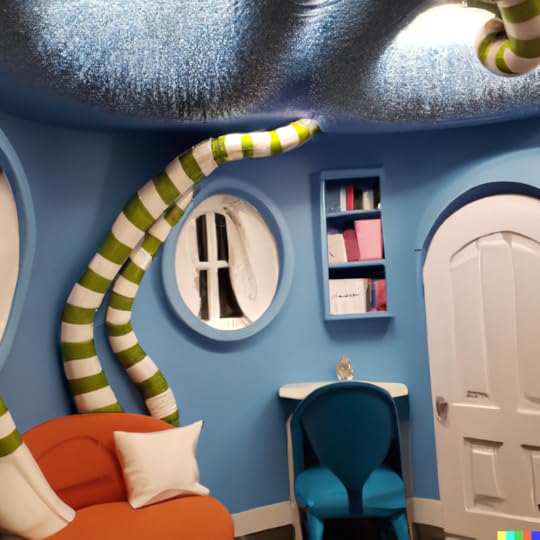
Attracting and retaining top talent is key to any company's success. The best way to improve your employer branding is by developing a culture of curiosity within your organization.
But what exactly is a ,culture of curiosity and how can it benefit your company?
A culture of curiosity is one where employees are encouraged to ask questions, seek out new information, and take on new challenges. It's a culture that values learning and personal growth and fosters an open and inclusive environment where employees feel comfortable sharing ideas and asking for help.
Five ways that developing a culture of curiosity can improve your employer branding: Attract top talent: Job candidates who are looking for a place where they can learn and grow will be attracted to an organization that values curiosity and encourages its employees to be lifelong learners. Improve retention: Employees who are given the opportunity to learn and grow are more likely to stay with the organization. By fostering a culture of curiosity, you can create a more engaging and fulfilling work environment , which can help reduce turnover. Increase innovation: A culture of curiosity encourages employees to ask questions and seek out new ideas, which can lead to innovation and improved business performance . Enhance your company's reputation: An organization that values learning and encourages its employees to be curious is likely to be seen as a forward-thinking and innovative company, which can enhance its reputation in the marketplace. Improve employee satisfaction: A culture of curiosity can lead to increased job satisfaction and a positive work environment, which can in turn improve employee morale and productivity.So how can you create a culture of curiosity within your organization? Here are some tips: Encourage employees to ask questions: A culture of curiosity encourages employees to ask questions, seek out new information, and challenge assumptions. This can foster a sense of collaboration and innovation within the organization. Provide opportunities for learning and development: Offering employees opportunities to learn new skills and gain new knowledge can foster a culture of curiosity and show that the organization values ongoing learning and development. Your organization can actively provide and promote opportunities for learning and development, such as training programs and professional development workshops. Encourage a growth mindset: A growth mindset is a belief that abilities and intelligence can be developed through effort and learning. Encouraging a growth mindset within the organization can foster a culture of curiosity and a desire to learn and improve. Promote a culture of experimentation: Encouraging employees to experiment and try new things can foster a culture of curiosity and drive innovation. One way you can do this is to foster an open and inclusive culture where employees feel comfortable sharing ideas and asking for help. You can do this by encouraging employees to take on new challenges and try new things. Then, be sure to reward curiosity and the desire to learn whenever you can. Hire curious people: Consider hiring employees who are naturally curious and have a strong desire to learn and grow. This can help to create a culture of curiosity within the organization.By developing a culture of curiosity, you can improve your employer branding and create a more engaging and fulfilling work environment for your employees.
Curious why more curiosity is great for whatever you are doing?
Curiosity is a bio-hack. ,As Dr. Huberman points out, the act of getting curious releases dopamine, serotonin, and norepinephrine simultaneously to produce a unique effect on the human body and brain. Learning how to harness and leverage this “hack” gives you a tremendous advantage in getting more done in whatever you are doing and finding greater satisfaction in what comes from it.
Curiosity can be so many things, it is easy to get lost in its power and potential. To simplify things here's a quick list of just some of what we know curiosity can do. Enjoy and stay curious!
Curious people are ,less anxious Curious people are ,less timid Curious people are ,not as defensive during initial counters with strangers Curious people have ,less aggressive actions to perceived triggers Curious people have ,improved conflict resolution skills Curious people have ,enhanced motivation to put themselves in another's shoes Curious people have ,less attachment to their own ideas Curious people have ,an increased interest in others' ideas Curious people are ,more likely to receive social support at work Curious people are ,more effective at building connections at work Curious people are ,more effective at building trust at work Curious people are ,more committed to their teams at work Curious people ,discover more innovative solutions that increase one's sense of meaningfulness at workBe sure to follow along with ,What If Curiosity as I will dive deeper with more specific examples and actions for how you can take a Curiosity-Based Thinking approach to learn, get, and enjoy more out of all you do.
Let's chat to maximize the power of your curiosity!
What to Wonder for Freelancers

Enjoy this ,Curiosity Q & A of eight Curiosity Questions and Actions to enhance freelancing success using Curiosity-Based Thinking
1. What if I struggle to find enough clients?Action 1:
Network with other professionals in your industry and seek out referral opportunities.
Attend industry conferences and events and connect with other professionals in your field. Join professional organizations and participate in local chapter meetings. Reach out to colleagues in your industry and offer to collaborate on projects or refer clients to each other.Action 2:
Consider offering discounts or promotions to attract new clients.
Offer a discounted rate for first-time clients. Consider running a promotion or special offer for a limited time to attract new business. Offer a referral discount to clients who refer new business to your company.Action 3:
Utilize social media and online job boards to advertise your services.
Create a company page on social media platforms like LinkedIn, Facebook, and Twitter, and use these platforms to share updates about your business and promote your services. Utilize online job boards and platforms specifically geared towards your industry to advertise job openings or contract work. Create a company website and using search engine optimization techniques to increase your visibility online.2. What if I'm not able to complete a project to the client's satisfaction?Action 1:
Communicate with the client regularly to ensure that you are meeting their expectations.
Schedule regular check-ins with the client to discuss the progress of the project and address any concerns or questions they may have. Set clear communication channels and expectations with the client from the start of the project, including how frequently you will communicate and what types of updates you will provide. Be responsive to client inquiries and requests for information. If you are unable to meet a deadline or deliver on a specific request, communicate this to the client as soon as possible.Action 2:
Seek feedback from the client throughout the project to make any necessary adjustments.
Schedule regular review sessions with the client to get their feedback on the project and make any necessary adjustments. Encourage the client to provide feedback at various stages of the project, rather than waiting until the end to address any issues. Use online tools like Google Docs or ,Trello to collaborate with the client and allow them to provide feedback and make comments in real time.Action 3:
Consider offering a guarantee or promise to redo the work if the client is not satisfied.
Offer a satisfaction guarantee to the client, stating that you will redo the work at no additional cost if they are not happy with the final product. Consider offering a money-back guarantee if the client is not satisfied with the final product. Consider offering a discounted rate or other incentives to the client if they are not satisfied with the work and you are unable to meet their expectations.3. What if I'm not able to deliver a project on time?Action 1:
Create a project schedule and timeline to help you stay organized and on track.
Break the project down into smaller tasks and assign deadlines for each one. Use a calendar or project management tool to track your progress and ensure that you are meeting your deadlines. Set aside dedicated blocks of time to work on the project and try to avoid multitasking or taking on too many other commitments that could distract you from the project.Action 2:
Set realistic deadlines for yourself and communicate with the client about any potential delays.
Be realistic about how long it will take you to complete the project, and be sure to allow enough time in your schedule for any unexpected delays that may arise. If you encounter any issues that could cause a delay, communicate with the client as soon as possible to let them know what is happening and provide an updated timeline. Consider setting intermediate deadlines for yourself to help you stay on track and meet the overall project deadline.Action 3:
Consider working with a project management tool to help you stay organized and on top of your workload.
There are a variety of project management tools available, including ,Asana, ,Trello, and ,Basecamp, that can help you organize your tasks, collaborate with team members, and track your progress. Use these tools to create a project schedule, assign tasks, and set deadlines. Consider using a time-tracking tool like ,Toggl or ,Harvest to help you keep track of how much time you are spending on different tasks and identify any bottlenecks that could be causing delays.4. What if I'm not able to charge enough for my services?Action1:
Research industry rates and pricing to determine a competitive rate for your services.
Look at industry benchmarks and see what other professionals in your field are charging for similar services. Consider the value that you bring to your clients and what sets you apart from your competition. Determine your own costs, including your time and any expenses related to the project, and use this information to help you set your rates.Action 2:
Consider offering package deals or bundles to make your services more appealing to clients.
Group together several of your services into a package deal and offer a discounted rate for the bundle. Consider offering additional services or perks, such as a free consultation or a discount on future services, as part of your package deals.Action 3:
Negotiate with clients to ensure that you are being fairly compensated for your work.
Be open to negotiation and be willing to listen to the client's concerns or budget constraints. Consider offering flexible pricing options or a tiered pricing structure to make your services more accessible to clients with different budgets. Communicate the value of your services to the client and explain why your rates are justified.Here are some step-by-step examples of how you might communicate the value of your services to a client and explain why your rates are justified:
a. Begin by understanding the client's needs and goals for the project. This will help you tailor your message and show how your services can help them achieve their objectives.
b. Research the client's industry and any unique challenges or opportunities they may be facing. This will help you better understand their perspective and how your services can address their specific needs.
c. Make a list of the benefits and value that your services offer to the client. This might include things like increased efficiency, cost savings, or a better end product.
d. Use specific examples and case studies to illustrate the value of your services. This will help the client understand how you have helped other clients achieve similar results.
e. Be transparent about your pricing and explain the factors that go into determining your rates. This might include things like your expertise, the time and resources required for the project, and any additional expenses.
f. Be open to answering the client's questions and concerns about your rates, and be willing to negotiate if necessary to reach a fair agreement.
g. Follow up with the client after the conversation to provide any additional information or clarification they may need to make a decision.
5. What if I don't have a steady stream of work?Action 1:
Diversify your services and consider offering a wider range of services to appeal to a wider range of clients.
Research your target market and identify areas where there is demand for your services. Consider offering additional services that complement your existing offerings, such as training or consulting. Think about ways you can differentiate your services from those offered by your competition, such as by offering specialized expertise or unique value-added services.Action 2:
Reach out to past clients and see if they have any new projects or needs that you could help with.
Create a list of past clients and consider reaching out to them via email or phone to see if they have any new projects or needs that you could help with. Offer special discounts or promotions to past clients to encourage them to work with you again. Follow up with past clients regularly to stay top of mind and let them know about any new services or capabilities you have developed since you last worked with them.Action 3:
Explore new markets or industries and see if there are opportunities for you to offer your services in these areas. This might involve networking with professionals in these industries or doing market research to understand the needs and challenges of these markets.
Research new industries or markets that could be a good fit for your services. Network with professionals in these industries and attend events or conferences to learn more about the needs and challenges of these markets. Consider offering specialized services or expertise that is relevant to these markets and can help you stand out from your competition.6. What if I'm not able to balance my workload effectively?Action 1:
Create a schedule and timeline to help you stay organized and on track.
Break your tasks down into smaller, manageable chunks and assign deadlines for each one. Use a calendar or project management tool to track your progress and ensure that you are meeting your deadlines. Set aside dedicated blocks of time to work on specific tasks, and try to avoid multitasking or taking on too many other commitments that could distract you from your work.Action 2:
Set realistic deadlines for yourself and communicate with clients about any potential delays.
Be realistic about how long it will take you to complete your tasks, and be sure to allow enough time in your schedule for any unexpected delays that may arise. If you encounter any issues that could cause a delay, communicate with your clients as soon as possible to let them know what is happening and provide an updated timeline. Consider setting intermediate deadlines for yourself to help you stay on track and meet the overall project deadline.Action 3:
Consider using a project management tool to help you stay organized and on top of your workload.
There are a variety of project management tools available, including Asana, Trello, and Basecamp, that can help you organize your tasks, collaborate with team members, and track your progress. Use these tools to create a project schedule, assign tasks, and set deadlines. Consider using a time tracking tool like Toggl or Harvest to help you keep track of how much time you are spending on different tasks and identify any bottlenecks that could be causing delays.7. What if I'm not able to market my services effectively?Action 1:
Utilize social media and online job boards to advertise your services.
Create a company page on social media platforms like LinkedIn, Facebook, and Twitter, and use these platforms to share updates about your business and promote your services. Utilize online job boards and platforms specifically geared towards your industry to advertise job openings or contract work. Consider creating a company website and using search engine optimization techniques to increase your visibility online.Action 2:
Network with other professionals and seek out referral opportunities.
Attend industry events and conferences and use these opportunities to connect with other professionals in your field. Join professional organizations and participate in local chapter meetings. Reach out to colleagues in your industry and offer to collaborate on projects or refer clients to each other.Action 3:
Consider offering discounts or promotions to attract new clients.
Offer a discounted rate for first-time clients. Consider running a promotion or special offer for a limited time to attract new business. Offer a referral discount to clients who refer new business to your company.8. What if I'm not able to handle the financial aspects of running a business?Action 1:
Create a budget and financial plan to help you manage your income and expenses.
Action 2:
Keep track of your financial records and receipts.
Action 3:
Consider working with a financial advisor or accountant to help you manage your finances.
Curious why more curiosity is great for whatever you are doing?
Curiosity is a bio-hack. ,As Dr. Huberman points out, the act of getting curious releases dopamine, serotonin, and norepinephrine simultaneously to produce a unique effect on the human body and brain. Learning how to harness and leverage this “hack” gives you a tremendous advantage in getting more done in whatever you are doing and finding greater satisfaction in what comes from it.
Curiosity can be so many things, it is easy to get lost in its power and potential. To simplify things here's a quick list of just some of what we know curiosity can do. Enjoy and stay curious!
Curious people are ,less anxious Curious people are ,less timid Curious people are ,not as defensive during initial counters with strangers Curious people have ,less aggressive actions to perceived triggers Curious people have ,improved conflict resolution skills Curious people have ,enhanced motivation to put themselves in another's shoes Curious people have ,less attachment to their own ideas Curious people have ,an increased interest in others' ideas Curious people are ,more likely to receive social support at work Curious people are ,more effective at building connections at work Curious people are ,more effective at building trust at work Curious people are ,more committed to their teams at work Curious people ,discover more innovative solutions that increase one's sense of meaningfulness at workBe sure to follow along with What If Curiosity as I will dive deeper with more specific examples and actions for how you can take a Curiosity-Based Thinking approach to learn, get, and enjoy more out of all you do.
Let's chat to maximize the power of your curiosity!
How to Take Action on Everything You Question with Curiosity Q&A

Discover how to use your natural curiosity to question (and act on) everything with the Curiosity-Based Thinking process, Curiosity Q&A.
What’s better than an answer?
A better question!
Questions and Answers? Boring!
What if you shake up the standard learning experience with something super?Curiosity Q&A is a Curiosity-Based Thinking process designed to help create learning experiences that go from curiosity to questions, to learning, to actions… to answers? What answers?!
Who needs answers when you’ve created the momentum for action?It does not matter what kind of educator you are: classroom teacher, team leader, trainer, coach, consultant, or entrepreneur educating your customers or clients, whatever reasons you teach, the Curiosity Q&A design process will help you get more learning in less time — and with a whole lot more fun!What is Curiosity Q&A?Curiosity Q&A is a Curiosity-Based Thinking process that drives actions over answers… it can be initiated in a minute and can last anywhere from another minute to all day (or longer).All you need is a question to start.Here’s how to do Curiosity Q&A:
Question: Start with any question about which you are naturally curious, you are teaching for a lesson, or taken directly from The Book of What If…?.
Action: Design a quick, simple action for learners to demonstrate understanding and/or exploration of the question.
Keep in Mind: Share a short segment of any relevant information for the exploration of the question or execution of the action.
Deeper Learning: Share any tangential information that either opens up or deepens one’s thinking about the question and/or action.
Challenge: Create a challenge that can only be accomplished through a demonstration of learning. Whereas the “Action” is typically something that can be done immediately, the “Challenge” can be something to extend the learning and/or actions surrounding the curiosity for additional activities and insights.Example of Curiosity Q&A from The Book of What If…?Question: What if broccoli tasted like chocolate?
Action: Imagine a world where broccoli does taste like chocolate: open a restaurant in this world; make sure you include a menu, the name of the restaurant, and any other details you’d like to add.
Keep in Mind: Some people love that broccoli tastes like broccoli; not only do some people enjoy the taste of broccoli, but could you imagine eating soups, salads, and other dishes (like beef and broccoli) in which broccoli is an ingredient now becoming chocolate-flavored?!
Deeper Learning: Why doesn’t broccoli taste like chocolate? See what you can discover about why broccoli tastes like broccoli and chocolate tastes like chocolate.
Challenge: What if flavors were more democratic? Create a short campaign speech or campaign poster persuading the voting public to vote on the change of one flavor of food for another.
If you would like me to create a Curiosity Q & A customized to a topic or learning goal, just ,let me know!
Be sure to follow along with ,What If Curiosity as I will dive deeper with more specific examples and actions for how you can take a Curiosity-Based Thinking approach to learn, get, and enjoy more out of all you do.
Stay curious!
Matt
Let's chat to maximize the power of your curiosity!
January 7, 2023
How Chatbots Can Boost Your Freelancing Business
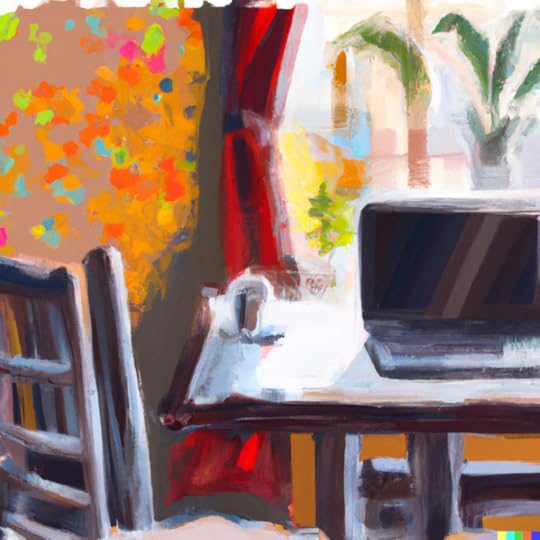
As a freelancer, it can be challenging to balance the demands of running a business with the need to deliver high-quality services to your clients. One way to streamline your operations and free up time for more important tasks is by using chatbots.
Chatbots are automated programs that use artificial intelligence to communicate with humans through messaging platforms like Facebook Messenger or WhatsApp. They can be an invaluable tool for freelancers looking to improve their success in the gig economy by automating customer service, generating leads, and enhancing their online presence.
Here are three ways that chatbots can help freelancers succeed in the gig economy:
Automating customer service:One of the most time-consuming aspects of being a freelancer is answering customer queries and providing support. Chatbots can help by automating this process and handling repetitive or basic customer inquiries. This frees up time for you to focus on more important tasks, such as finding new clients or working on projects.

To use chatbots for customer service, start by determining the types of queries that the chatbot will be able to handle. These might include questions about your services, pricing, availability, or policies.
Then, create a chatbot using a chatbot-building platform like ,MobileMonkey, ,Chatfuel, or ,ManyChat.
Train the chatbot by providing it with sample customer queries and responses, and set it up to work with your preferred messaging platform.
Finally, monitor the chatbot's performance and adjust its responses as needed to ensure that it is providing accurate and helpful information to your customers.
Generating leads:Generating leads is crucial for any business, and chatbots can be an effective tool for freelancers to do this. By creating a chatbot that engages with potential clients and gathers information about their needs and interests, you can create a stream of qualified leads that you can follow up on.

To use chatbots for lead generation, start by determining the target audience for the chatbot. This could be potential clients in a specific industry or location, or it could be a more general audience that might be interested in your services.
Then, create a chatbot using a chatbot building platform and train it to engage with potential clients and gather information about their needs and interests.
Set up the chatbot to work with your preferred messaging platform, monitor its performance, and adjust its questions and responses as needed. As the chatbot gathers more information from potential clients, you can use this data to create targeted marketing campaigns and follow up with qualified leads.
Enhancing online presence:Establishing a strong online presence is essential for any freelancer, and chatbots can help you do this. By creating chatbots that provide valuable information and resources to your target audience, you can establish yourself as a thought leader in your field and attract more clients.
To use chatbots to enhance your online presence, start by determining the type of content that you want the chatbot to provide to your audience. This could include educational resources, industry news, or promotional materials for your services.
Then, create a chatbot using a chatbot-building platform and train it to provide the content you have selected to your target audience. You can also include options for users to sign up for newsletters or follow you on social media.
Lastly, set up the chatbot to work with your preferred messaging platform, monitor its performance, and adjust the content it provides as needed. As the chatbot engages with more users, you can use this data to understand what types of content are most valuable to your audience and tailor your content strategy accordingly.
What are the basic steps to training a chatbot?
Training a chatbot involves providing the chatbot with examples of the types of conversations it will have with users and the responses it should provide in each case. This allows the chatbot to learn how to recognize and respond to similar conversations in the future.
The basics of training a chatbot: Determine the purpose of the chatbot : Before you start training the chatbot, it's important to have a clear idea of what the chatbot will be used for. Will it be used for customer service, lead generation, or to provide content to users? Understanding the chatbot's purpose will help you determine the types of conversations it will need to be able to handle. Collect examples of conversation : Next, you will need to collect examples of the types of conversations the chatbot will have with users. These might be real conversations that the chatbot will handle, or they might be fictional examples that you create to demonstrate different types of interactions. Create a training dataset : Once you have collected examples of conversations, you will need to create a training dataset by organizing the conversations into pairs of inputs (questions or statements from users) and outputs (responses from the chatbot). Train the chatbot : Once you have a training dataset, you can use it to train the chatbot. This typically involves feeding the training dataset into a machine learning algorithm, which will learn to recognize patterns in the conversations and generate appropriate responses. Test the chatbot : After training the chatbot, it's important to test it to ensure that it is able to handle a wide range of conversation types and respond appropriately. You can do this by providing the chatbot with additional examples of conversations and evaluating its responses. Fine-tune the chatbot : As the chatbot handles more conversations, you may need to fine-tune its responses to ensure that it is providing accurate and helpful information to users. This might involve adjusting the training dataset or modifying the chatbot's algorithms.Chatbots can be a valuable tool for freelancers looking to improve their success in the gig economy. By automating customer service, generating leads, and enhancing their online presence, freelancers can save time and resources and focus on the tasks that will drive their business forward.
If you want to learn more about how to turn your curiosity into innovation for success as a freelancer, consider signing up for a free introduction to ,Curiosity-Based Thinking course offered by ,What If Curiosity. This course will teach you how to harness your natural curiosity and use it to drive innovation and growth in your business. Don't let your curiosity go to waste – sign up for the course today and start turning your curiosity into a success!
Curious why more curiosity is great for whatever you are doing?
Curiosity is a bio-hack. As Dr. Huberman points out, the act of getting curious releases dopamine, serotonin, and norepinephrine simultaneously to produce a unique effect on the human body and brain. Learning how to harness and leverage this “hack” gives you a tremendous advantage in getting more done in whatever you are doing and finding greater satisfaction in what comes from it.
Curiosity can be so many things, it is easy to get lost in its power and potential. To simplify things here's a quick list of just some of what we know curiosity can do. Enjoy and stay curious!
Curious people are ,less anxious Curious people are ,less timid Curious people are ,not as defensive during initial counters with strangers Curious people have ,less aggressive actions to perceived triggers Curious people have ,improved conflict resolution skills Curious people have ,enhanced motivation to put themselves in another's shoes Curious people have ,less attachment to their own ideas Curious people have ,an increased interest in others' ideas Curious people are ,more likely to receive social support at work Curious people are ,more effective at building connections at work Curious people are ,more effective at building trust at work Curious people are ,more committed to their teams at work Curious people ,discover more innovative solutions that increase one's sense of meaningfulness at workBe sure to follow along with ,What If Curiosity as I will dive deeper with more specific examples and actions for how you can take a Curiosity-Based Thinking approach to learn, get, and enjoy more out of all you do.
Stay curious!
Matt
Let's chat to maximize the power of your curiosity!



